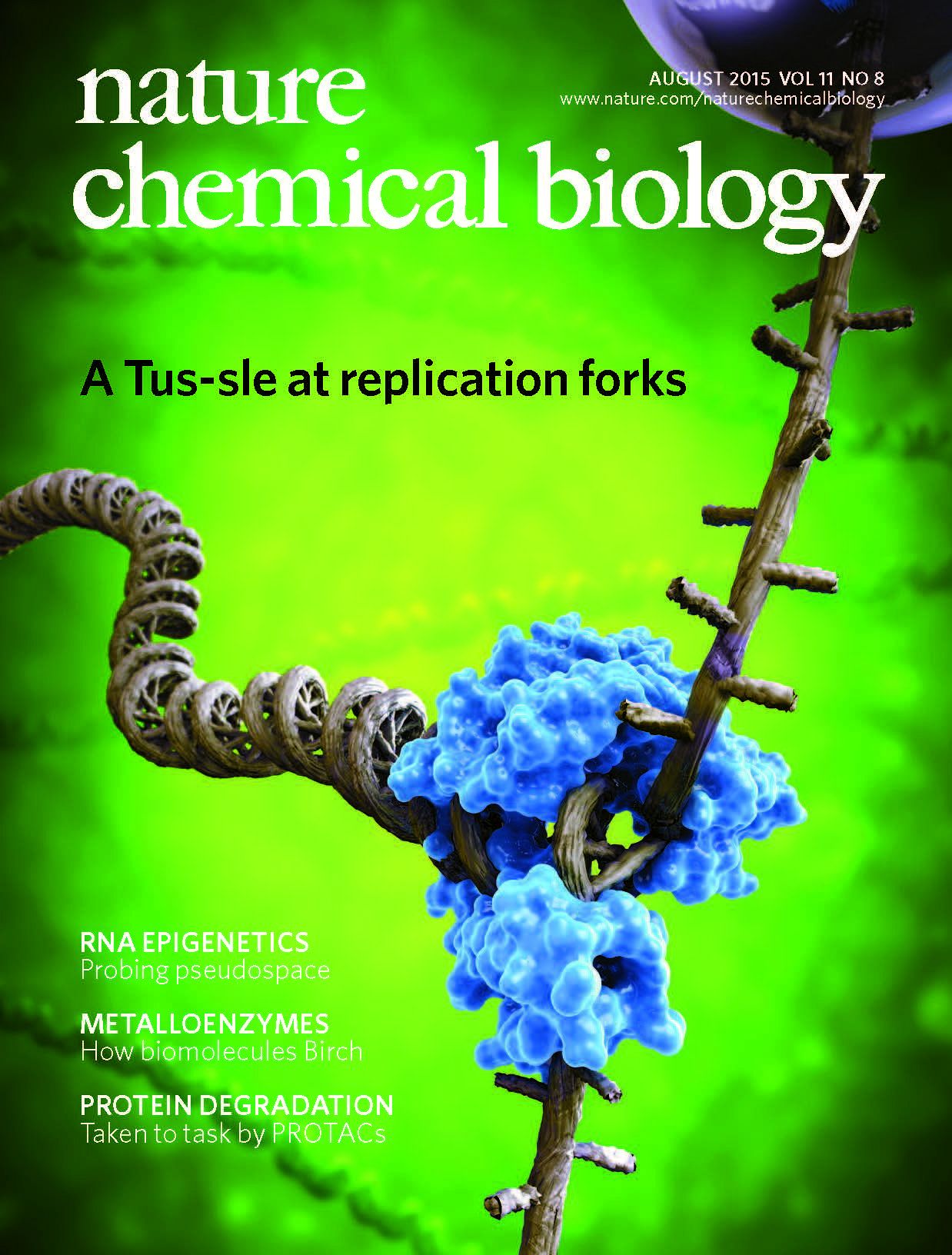Researchers of TU Delft have shed light on the way DNA replication stops in the Escherichia coli bacterium. The research is an important milestone towards understanding DNA replication in bacteria.
It speeds like a bullet train. The replisome, the molecular machine that carries out DNA replication, moves at a rate of a thousand base pairs (building blocks of DNA) per second. That is the same speed with which you zip up your sweater. Once it is started, stopping it is precarious.
Researchers at the Kavli Institute of Nanoscience of TU Delft and the University of Wollongong in Australia found out how the Escherichia coli bacterium succeeds in stopping the replisome from moving on once DNA replication is finished.
The findings appeared this week in Nature Chemical Biology and solve a long standing issue that caused much debate. An artist’s impression of the experiment made it to the cover of the magazine.
The replisome first unwinds, or unzips, double stranded DNA into two single strands. For each of the resulting single strands, it synthesizes a new complementary sequence of DNA. The net result is the formation of two new double stranded DNA sequences that are exact copies of the original double stranded DNA sequence.
Most bacteria, like E.coli, have a single circular chromosome which is replicated in both directions at the same time. This implies that two DNA replication forks proceed in opposite directions from the start site and approach each other head-on. A molecular roadblock prevents them from replicating beyond the termination site, somewhat like buffer stops on a railway track.
The blocking proteins are called Tus blocks and they bind to a specific DNA sequence called Ter. “The Tus-Ter protein–DNA molecular roadblock was subject to quite some scientific controversy”, said first author, Bojk Berghuis, PhD researcher at the Nynke Dekker lab, which is part of the Kavli Institute of Nanoscience.
“The lock is very strong”, David Dulin, Berghuis’ colleague and second author of the paper, added. “A force of 16 piconewton is enough to unzip the DNA. Whereas to break the lock one had to pull four to five times harder for several minutes.”
The researchers measured these forces using magnetic tweezers. This is a technique in which a single DNA molecule is attached to a glass plate at one end and to a magnetic ball at the other. With a pair of magnets directly above the magnetic ball the DNA can be extended. The force required to extend the DNA can be read out. The researchers used this technique to unzip a stretch of double DNA helix, thereby mimicking the strand separation that normally accompanies DNA replication.
Bojk Berghuis, et., al. Strand separation establishes a sustained lock at the Tus-Ter replication fork barrier. Nature Chemical Biology, August 2015, DOI: 10.1038/NCHEMBIO.1857



Comments are closed.